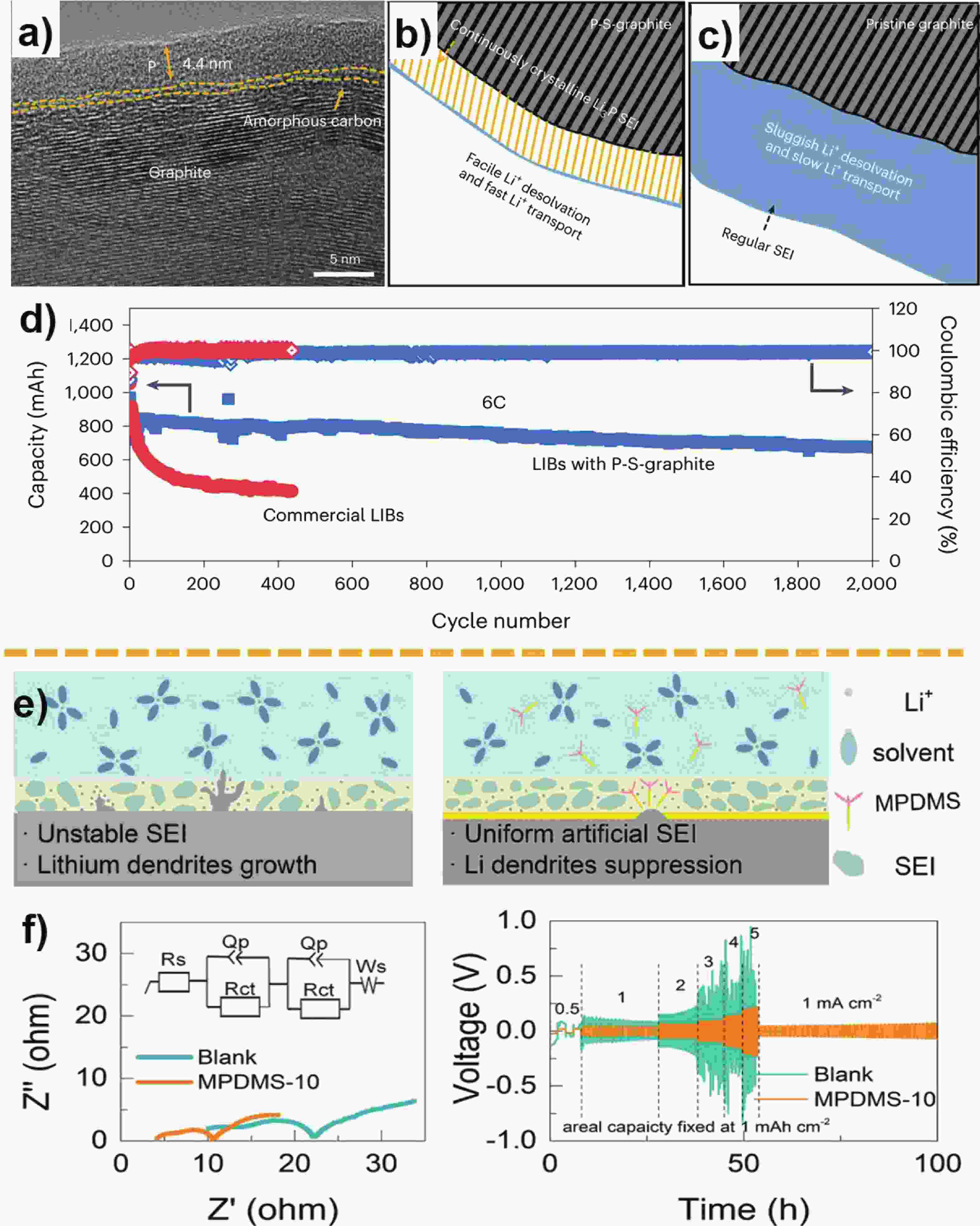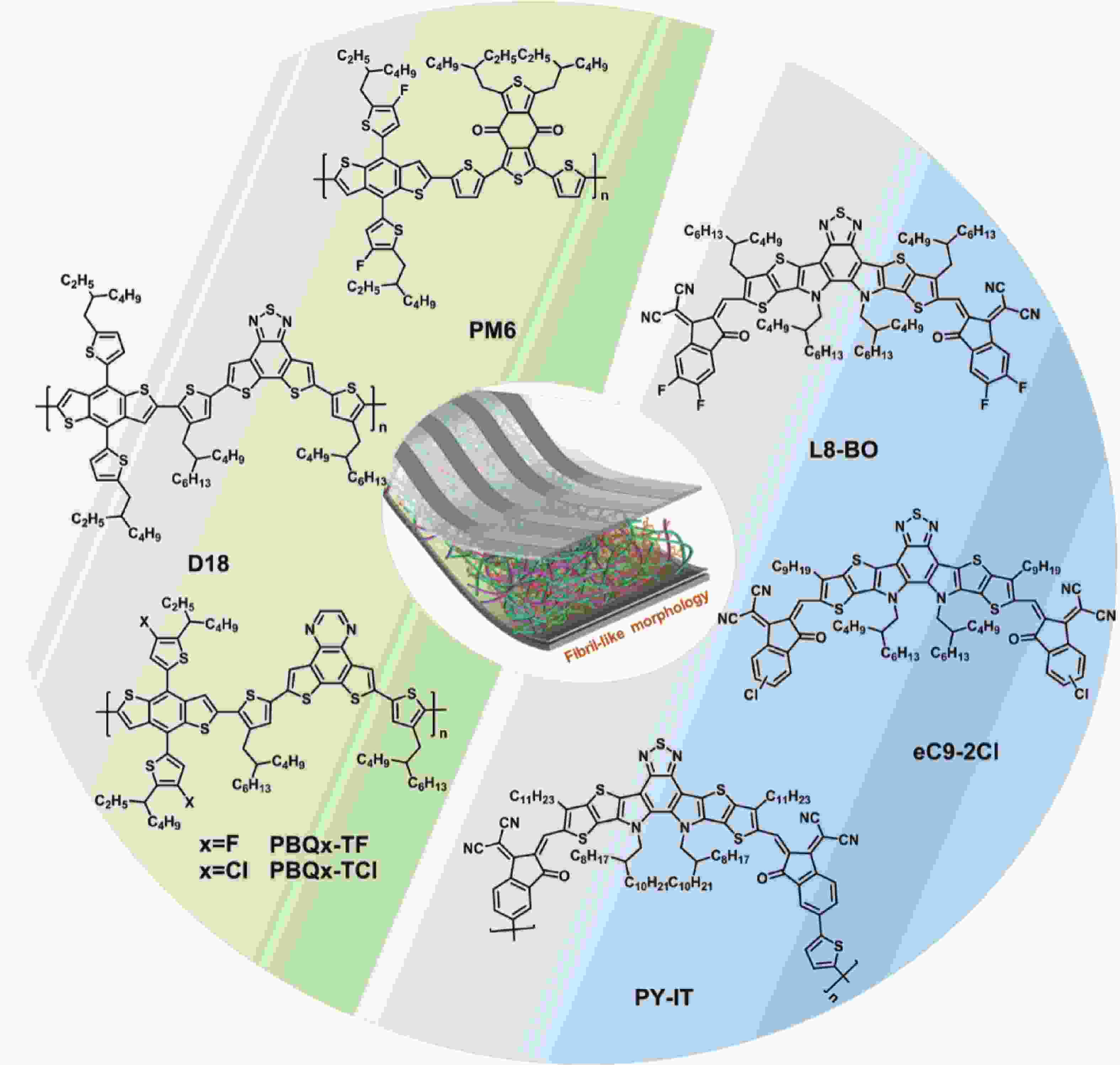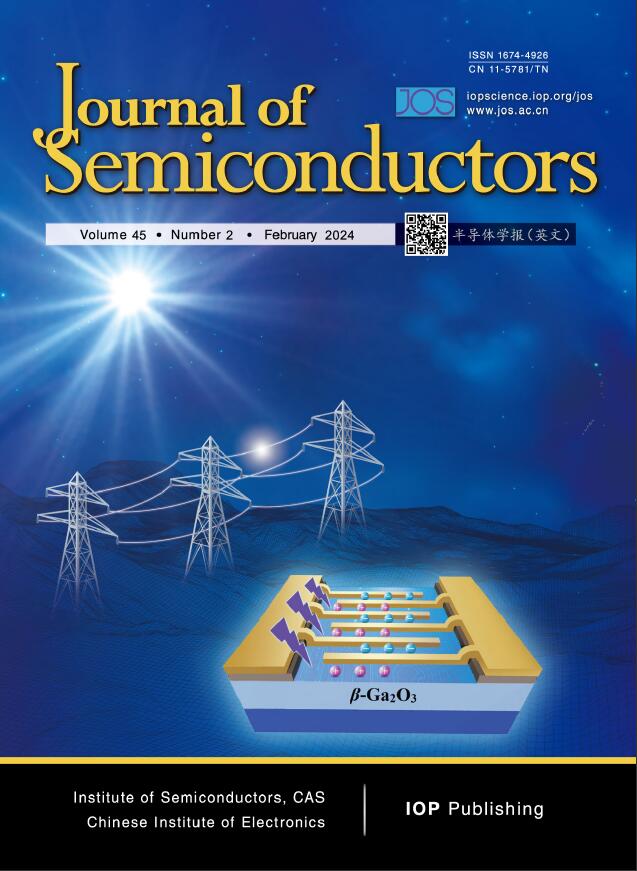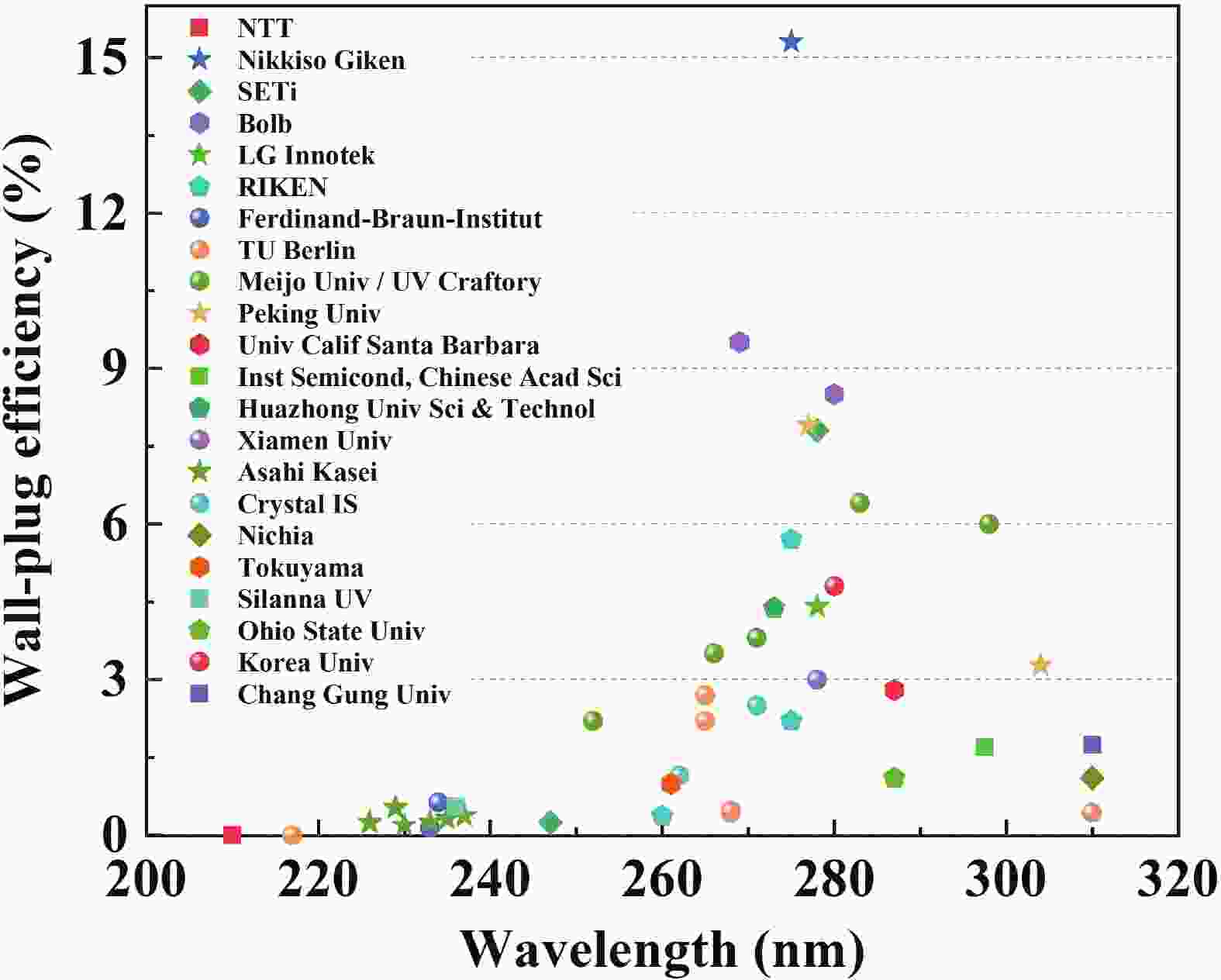
The development of semiconductors is always accompanied by the progress in controllable doping techniques. Taking AlGaN-based ultraviolet (UV) emitters as an example, despite a peak wall-plug efficiency of 15.3% at the wavelength of 275 nm, there is still a huge gap in comparison with GaN-based visible light-emitting diodes (LEDs), mainly attributed to the inefficient doping of AlGaN with increase of the Al composition. First, p-doping of Al-rich AlGaN is a long-standing challenge and the low hole concentration seriously restricts the carrier injection efficiency. Although p-GaN cladding layers are widely adopted as a compromise, the high injection barrier of holes as well as the inevitable loss of light extraction cannot be neglected. While in terms of n-doping the main issue is the degradation of the electrical property when the Al composition exceeds 80%, resulting in a low electrical efficiency in sub-250 nm UV-LEDs. This review summarizes the recent advances and outlines the major challenges in the efficient doping of Al-rich AlGaN, meanwhile the corresponding approaches pursued to overcome the doping issues are discussed in detail.

Anode materials are an essential part of lithium-ion batteries (LIBs), which determine the performance and safety of LIBs. Currently, graphite, as the anode material of commercial LIBs, is limited by its low theoretical capacity of 372 mA·h·g−1, thus hindering further development toward high-capacity and large-scale applications. Alkaline earth metal iron-based oxides are considered a promising candidate to replace graphite because of their low preparation cost, good thermal stability, superior stability, and high electrochemical performance. Nonetheless, many issues and challenges remain to be addressed. Herein, we systematically summarize the research progress of alkaline earth metal iron-based oxides as LIB anodes. Meanwhile, the material and structural properties, synthesis methods, electrochemical reaction mechanisms, and improvement strategies are introduced. Finally, existing challenges and future research directions are discussed to accelerate their practical application in commercial LIBs.
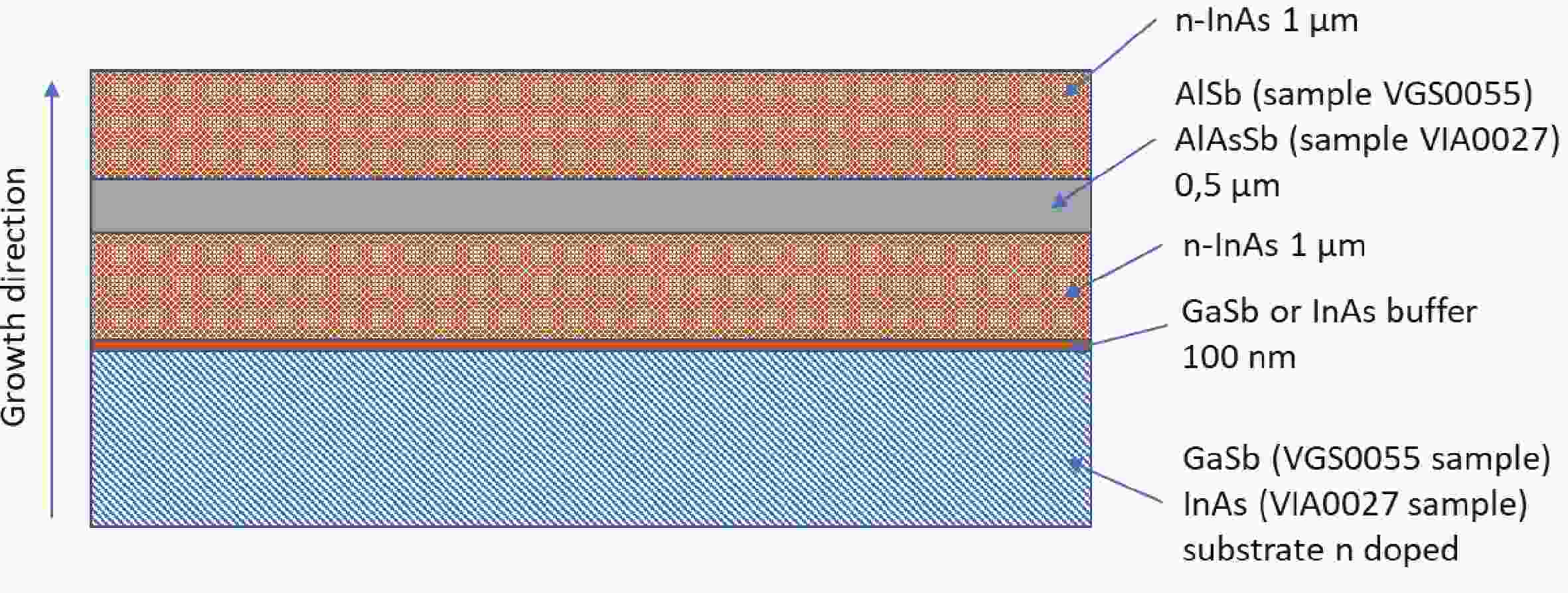
We introduce a novel method to create mid-infrared (MIR) thermal emitters using fully epitaxial, metal-free structures. Through the strategic use of epsilon-near-zero (ENZ) thin films in InAs layers, we achieve a narrow-band, wide-angle, and p-polarized thermal emission spectra. This approach, employing molecular beam epitaxy, circumvents the complexities associated with current layered structures and yields temperature-resistant emission wavelengths. Our findings contribute a promising route towards simpler, more efficient MIR optoelectronic devices.

Phase-change material (PCM) is widely used in thermal management due to their unique thermal behavior. However, related research in thermal rectifier is mainly focused on exploring the principles at the fundamental device level, which results in a gap to real applications. Here, we propose a controllable thermal rectification design towards building applications through the direct adhesion of composite thermal rectification material (TRM) based on PCM and reduced graphene oxide (rGO) aerogel to ordinary concrete walls (CWs). The design is evaluated in detail by combining experiments and finite element analysis. It is found that, TRM can regulate the temperature difference on both sides of the TRM/CWs system by thermal rectification. The difference in two directions reaches to 13.8 K at the heat flow of 80 W/m2. In addition, the larger the change of thermal conductivity before and after phase change of TRM is, the more effective it is for regulating temperature difference in two directions. The stated technology has a wide range of applications for the thermal energy control in buildings with specific temperature requirements.
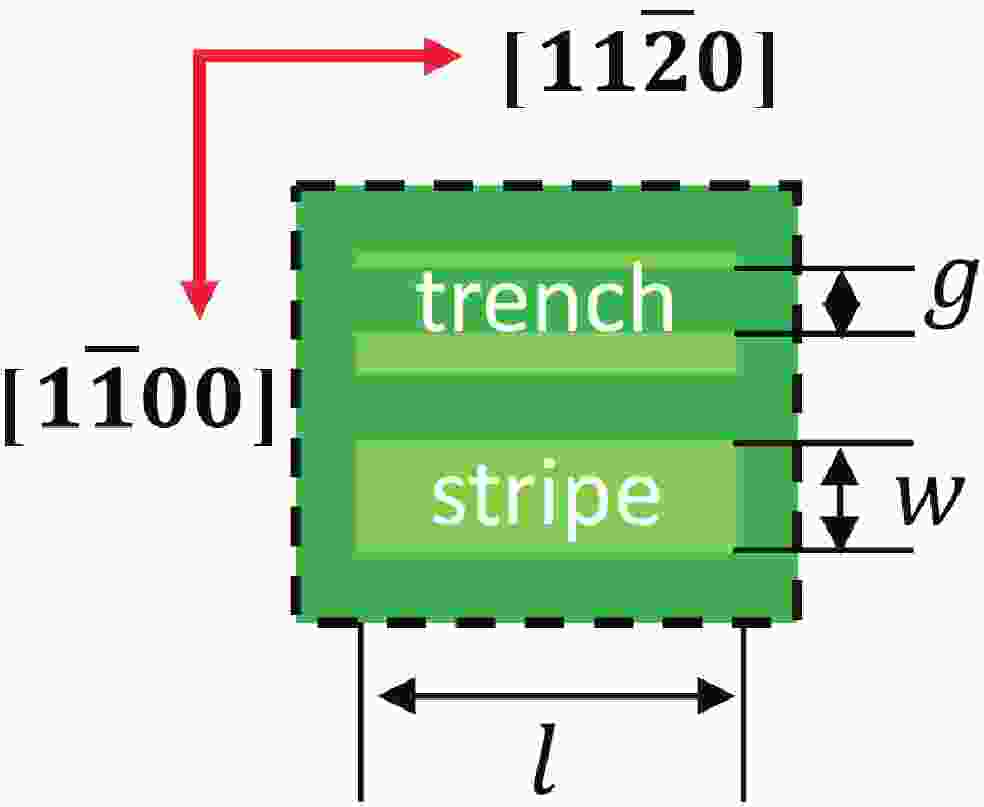
A new kind of step-flow growth mode is proposed, which adopts sidewall as step source on patterned GaN substrate. The terrace width of steps originated from the sidewall was found to change with the growth temperature and ammonia flux. The growth mechanism is explained and simulated based on step motion model. This work helps better understand the behaviors of step advancement and puts forward a method of precisely modulating atomic steps.

In this work, a two-step metal organic chemical vapor deposition (MOCVD) method was applied for growing β-Ga2O3 film on c-plane sapphire. Optimized buffer layer growth temperature (TB) was found at 700 °C and the β-Ga2O3 film with full width at half maximum (FWHM) of 0.66° was achieved. A metal−semiconductor−metal (MSM) solar-blind photodetector (PD) was fabricated based on the β-Ga2O3 film. Ultrahigh responsivity of 1422 A/W @ 254 nm and photo-to-dark current ratio (PDCR) of 106 at 10 V bias were obtained. The detectivity of 2.5 × 1015 Jones proved that the photodetector has outstanding performance in detecting weak signals. Moreover, the photodetector exhibited superior wavelength selectivity with rejection ratio (R250 nm/R400 nm) of 105. These results indicate that the two-step method is a promising approach for preparation of high-quality β-Ga2O3 films for high-performance solar-blind photodetectors.
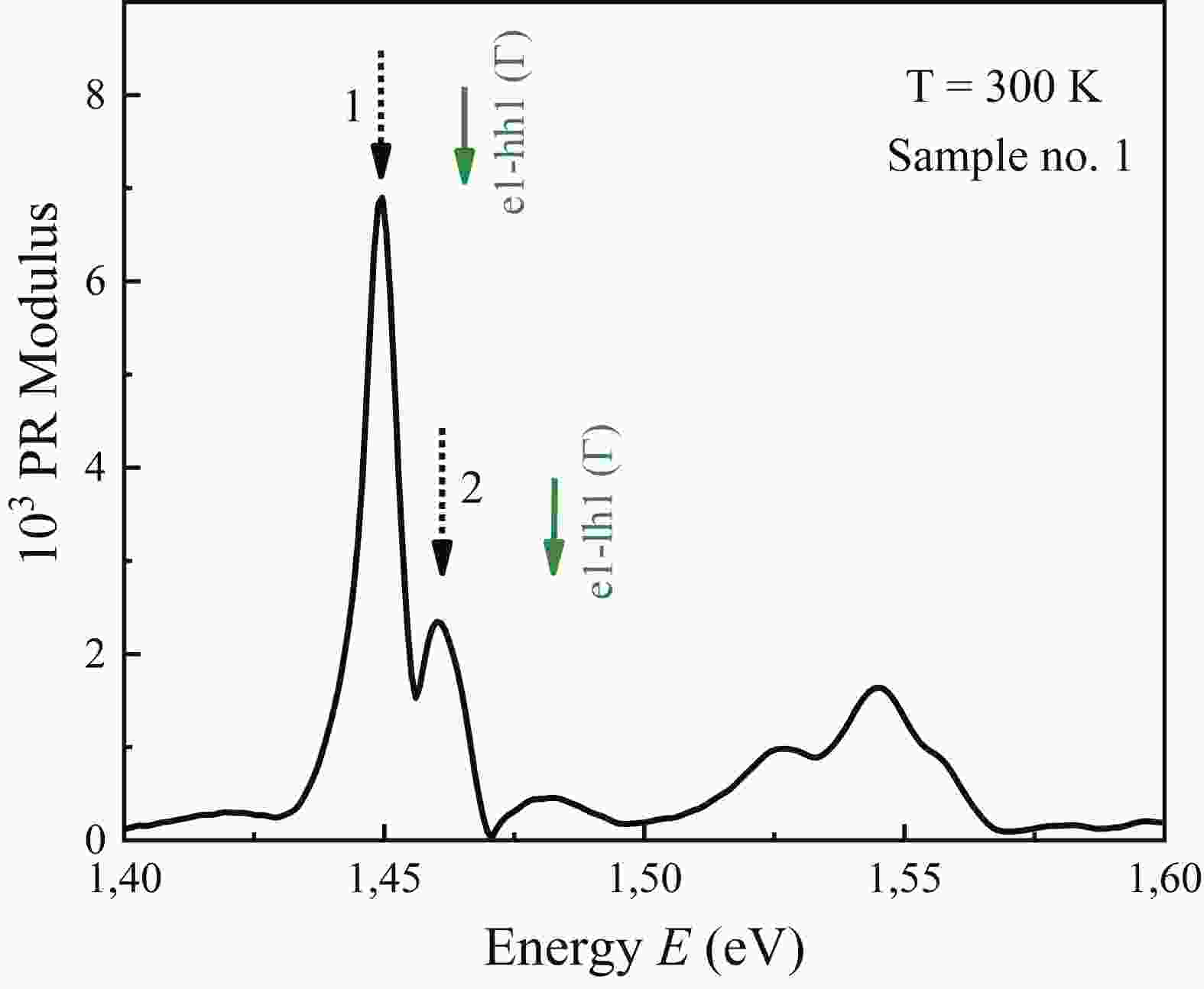
A new theoretical method to study super-multiperiod superlattices has been developed. The method combines the precision of the 8-band kp-method with the flexibility of the shooting method and the Monte Carlo approach. This method was applied to examine the finest quality samples of super-multiperiod Al0.3Ga0.7As/GaAs superlattices grown by molecular beam epitaxy. The express photoreflectance spectroscopy method was utilized to validate the proposed theoretical method. For the first time, the accurate theoretical analysis of the energy band diagram of super-multiperiod superlattices with experimental verification has been conducted. The proposed approach highly accurately determines transition peak positions and enables the calculation of the energy band diagram, transition energies, relaxation rates, and gain estimation. It has achieved a remarkably low 5% error compared to the commonly used method, which typically results in a 25% error, and allowed to recover the superlattice parameters. The retrieved intrinsic parameters of the samples aligned with XRD data and growth parameters. The proposed method also accurately predicted the escape of the second energy level for quantum well thicknesses less than 5 nm, as was observed in photoreflectance experiments. The new designs of THz light-emitting devices operating at room temperature were suggested by the developed method.
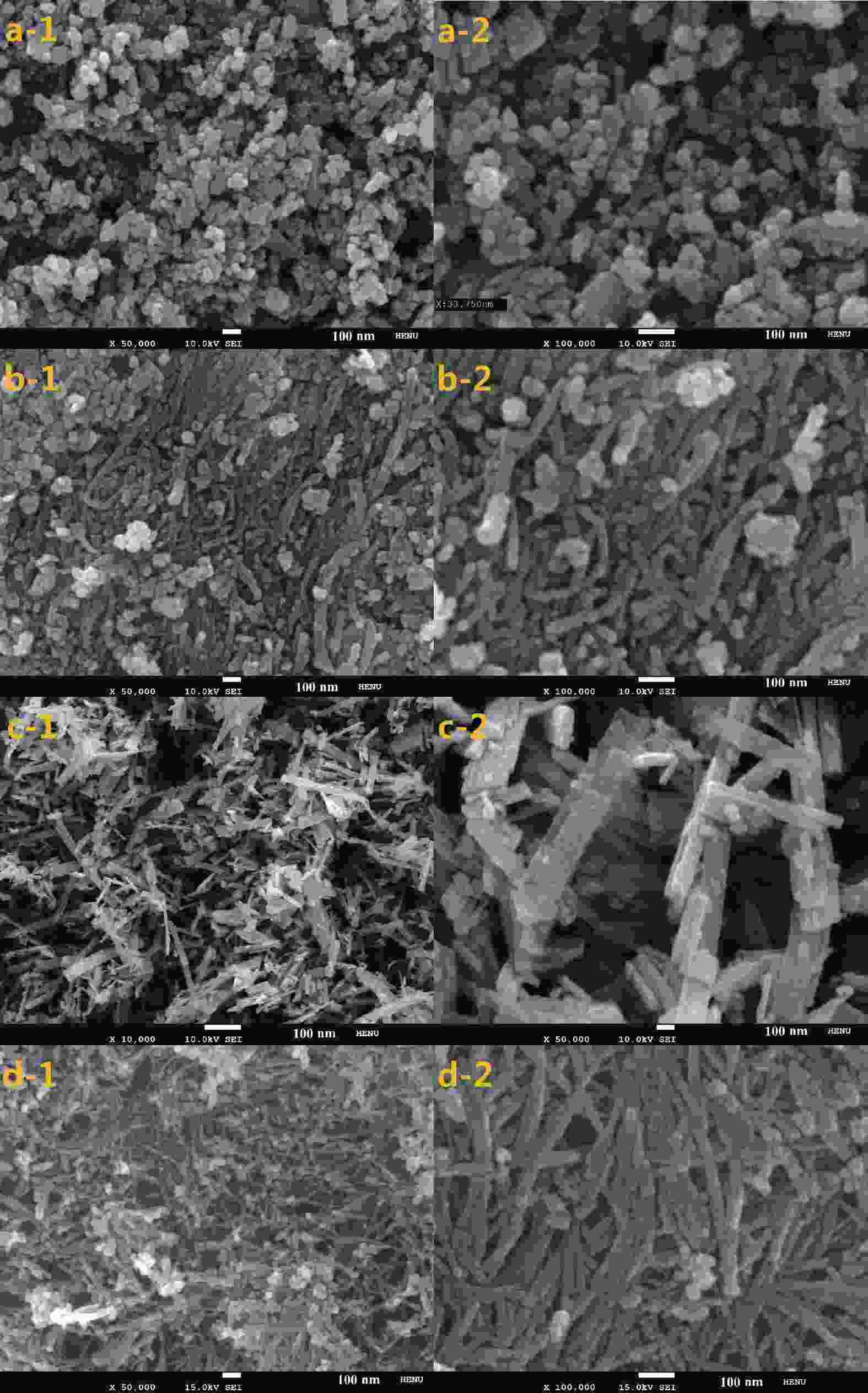
The TiO2 with nanoparticles (NPs), nanowires (NWs), nanorods (NRs) and nanotubes (NTs) structures were prepared by using a in-situ hydrothermal technique, and then proposed as a photoanode for flexible dye-sensitized solar cell (FDSSC). The influences of the morphology of TiO2 on the photovoltaic performances of FDSSCs were investigated. Under rear illumination of 100 mW·cm−2, the power conversion efficiencies of FDSSCs achieved 6.96%, 7.36%, 7.65%, and 7.83% with the TiO2 photoanodes of NPs, NWs, NRs, and NTs and PEDOT counter electrode. The FDSSCs based on TiO2 NRs and NTs photoanodes have higher short circuit current densities and power conversion efficiencies than that of the others. The enhanced power conversion efficiency is responsible for their nanotubes and rod-shaped ordered structures, which are more beneficial to transmission of electron and hole in semiconductor compared to the TiO2 nanoparticles and nanowires disordered structure.




